 Music
Music  Music
Music  History
History 10 Less Than Jolly Events That Occurred on December 25
 Weird Stuff
Weird Stuff 10 Funny Ways That Researchers Overthink Christmas
 Politics
Politics 10 Political Scandals That Sent Crowds Into the Streets
 Weird Stuff
Weird Stuff Ten Bizarre Facts About The Doge Meme
 Our World
Our World 10 Ways Your Christmas Tree Is More Lit Than You Think
 Movies and TV
Movies and TV The 10 Coolest Stars to Set Sail on The Love Boat
 History
History 10 Things You Didn’t Know About the American National Anthem
 Technology
Technology Top 10 Everyday Tech Buzzwords That Hide a Darker Past
 Humans
Humans 10 Everyday Human Behaviors That Are Actually Survival Instincts
 Music
Music 10 Surprising Origin Stories of Your Favorite Holiday Songs
 History
History 10 Less Than Jolly Events That Occurred on December 25
 Weird Stuff
Weird Stuff 10 Funny Ways That Researchers Overthink Christmas
Who's Behind Listverse?

Jamie Frater
Head Editor
Jamie founded Listverse due to an insatiable desire to share fascinating, obscure, and bizarre facts. He has been a guest speaker on numerous national radio and television stations and is a five time published author.
More About Us Politics
Politics 10 Political Scandals That Sent Crowds Into the Streets
 Weird Stuff
Weird Stuff Ten Bizarre Facts About The Doge Meme
 Our World
Our World 10 Ways Your Christmas Tree Is More Lit Than You Think
 Movies and TV
Movies and TV The 10 Coolest Stars to Set Sail on The Love Boat
 History
History 10 Things You Didn’t Know About the American National Anthem
 Technology
Technology Top 10 Everyday Tech Buzzwords That Hide a Darker Past
 Humans
Humans 10 Everyday Human Behaviors That Are Actually Survival Instincts
Top 10 Hitmen of the Sicilian Mafia
The Mafia emerged in the mid-nineteenth century in Sicily. The American Mafia arose from offshoots of the Mafia, fueled by waves of Italian immigration during the late nineteenth century. For made members and associates of the Mafia, murder is needed to frighten and dissuade imprisoned members from “ratting” to reduce their prison time. Sometimes murders are committed for revenge or due to simple disagreements. Murder became a profession in the mafia; career hitmen passed the skill on to other made members throughout history. The planning, execution and disposal of the remains are all part of the trade to a skilled contract killer. Despite the expertise involved, most career killers eventually met their own violent end, or spent a large portion of their lives in prison. I have included mafia associates in the list, as well as made members.
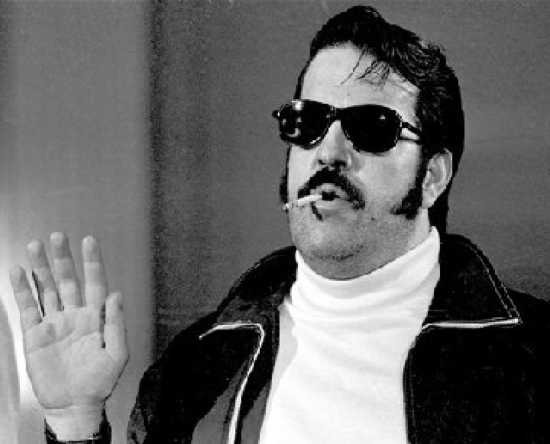
Barboza is renowned for being one of the most feared hitmen during the 1960s; he is believed to have killed over 26 people. He earned his nickname during an incident at a nightclub when he bit out part of a man’s cheek after a disagreement. For a while he pursued a career as a boxer, winning 8 out of his 12 fights under the moniker of “The Baron.” Despite several attempts to make a legitimate living he would always return to crime. In 1950 he served a 5 years sentence at the Massachusetts Correctional Institute, during which he assaulted guards and other inmates on numerous occasions. Three years into his sentence he escaped with fellow inmates, though was soon recaptured.
After his release, he became involved with big time gangsters and started his own burglary ring. Around this time he also began his first work as a hitman for the Patriarca Crime Family. Over the years the number of his victims grew, as did his reputation as a contract killer. His preferred murder weapon was a silenced pistol, though it is thought he also experimented with car bombs. Barboza soon became a powerful and respected figure in the criminal underworld; however his rash personality and violent reputation soon made him dangerous enemies. After being imprisoned on murder charges, he learned that his old criminal friends were plotting to assassinate him. He agreed to testify against mob boss Raymond Patriarca, in return for protection by the FBI. After living in the witness protection program for some time, his enemies finally caught up with him. In 1976, he was ambushed outside his home and killed instantly by a shotgun blast.

Joseph Gallo was a notorious mafia enforcer from the Profaci crime family, based in New York. He killed without provocation and was thought to be involved in many contract killings on the orders of boss Joe Profaci. Ironically his nickname had nothing to do with his murderous reputation. Many gangsters labelled him “Crazy” for his habit of reciting lines of dialogue from gangster movies and impersonating fictitious mob characters. His reputation soared in 1957 when he was suspected (though never proven) of being the gunmen in the assassination of powerful mob boss Albert Anastasia.
Gallo later led a gang in an attempt to overthrow the leader of the Profaci family, Joseph Profaci. The attempt was unsuccessful and many of his friends and relatives were systematically murdered by Profaci’s men. To make things worse for Gallo, in 1961 he was convicted of extortion and sentenced to 10 years imprisonment. Whilst in prison he attempted to murder several fellow inmates by politely inviting them into his cell and then giving them food laced with strychnine. Many inmates became extremely ill though none died. He was paroled after serving 8 years of his sentence.
After his release, Gallo became determined to take over Joe Colombo as the leader of the Colombo crime family. In 1971 an African-American gangster shot Colombo three times in the head on Gallo’s orders. However, Gallo would soon meet his own violent end. In 1972 when he was eating at a seafood restaurant with his family and bodyguard, a lone gunman burst through the rear entrance and shot Gallo five times in the chest. He staggered into the street and collapsed dead. The primary suspect for the killing is thought to have been Carlo Gambino, who allegedly ordered the hit in revenge for the murder of friend Joe Colombo.
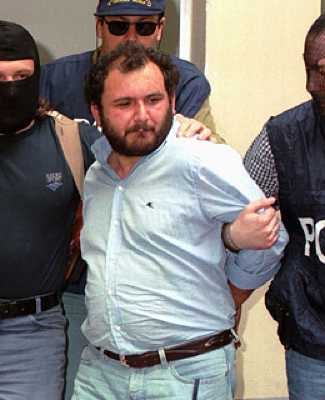
Giovanni Brusca is renowned as one of the most ruthless and sadistic members in the history of the Sicilian Mafia. He claims to have murdered over 200 men, though this figure seems unlikely and authorities haven’t given it much credit. Brusca was raised in Palermo, Italy and began associating with underworld figures from a young age. He eventually became a member of a “death squad,” who completed hits on the orders of boss Salvatore Riina.
Brusca participated in the murder of anti-Mafia prosecutor Giovanni Falcone in 1992. A huge bomb weighing almost half a ton was placed under a motorway in Palermo. When Falcone’s car passed by, Brusca detonated the device killing Falcone and many civilians in the process. The explosion was so massive that it blew a large hole in the road and measured on local earthquake monitors. Soon after Brusca faced problems; a former friend named Giuseppe di Matteo had turned informant and implicated him the Falcone murder. In order to silence Di Matteo, Brusca kidnapped his 11-year-old son and proceeded to torture him over the course of two years. He also sent horrifying pictures of the tortured boy to Di Matteo, demanding that he withdraw his testimony. Eventually the boy was strangled with a garrote and his body dissolved in acid to destroy evidence.
Brusca was sentenced to life imprisonment and went on the run, though still continued his activity in organized crime. Authorities eventually caught up with him and he was arrested in a small house in the Sicilian countryside. The arresting officers wore ski masks to disguise their identity from the Mafia, as reprisal attacks had become so common. He was charged and convicted with multiple murders, on top of the murder sentence he received in absentia and is currently in jail where he will remain for the rest of his days.
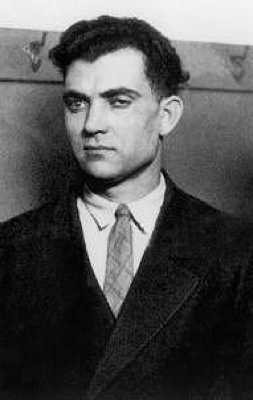
John Scalise served as one of Al Capone’s primary hit men during prohibition-era in the 1930s and ’40s. When he was twenty years old he lost his right eye in a knife fight, which was later replaced with a glass one. Afterwards, Scalise strengthened his mob ties and began to accept murder contracts from the Gennas brothers. He later secretly defected to the Chicago outfit and accepted contracts from Al Capone. Scalise also served a fourteen year prison sentence for manslaughter around this time, and he was reportedly beaten severely by fellow inmates.
He is perhaps most famous for being a suspect in the notorious St Valentine’s Day Massacre, when seven people were lined up against a wall and brutally gunned down by gangsters dressed as police officers. Scalise was arrested and charged with the murders, though he was found not guilty due to lack of evidence. In the aftermath, Capone found out that Scalise and two other hitmen were involved in a plot to topple his leadership. He responded by luring the men to a banquet and personally beating all three almost to death with a baseball bat, before an enforcer stepped in to finish the job with a pistol.

Tommy DeSimone’s infamy is recognized by his depiction by actor Joe Pesci in the 1990 movie “Goodfellas.” However, while shown in the film as a small man with an attitude, DeSimone was a large, burly enforcer, standing over 6ft tall and around 225 pounds. He is proven to have killed at least 6 people personally, though the total is thought to be over 11. He was described by informant Henry Hill as a “pure psychopath.”
DeSimone committed his first murder in 1968; while walking down the street with Henry Hill he saw an unknown man walking towards the pair. He turned to Henry and said: “Hey, watch this” then yelled: “Hey cocksucker!” and shot the man dead. This wouldn’t be the last time he killed out of impulse. In a bar owned by mobster Jimmy Burke an argument broke out between DeSimone and a young barman named Michael “Spider” Gianco over an incorrect drinks bill. DeSimone pulled out his pistol and demanded that the barman danced for him. When he refused, DeSimone shot him in the foot. A week later in the same bar DeSimone began to mock Spider for his wounded foot and he responded by saying: “Why don’t you go fuck yourself Tommy?” to which laughter erupted. DeSimone promptly pulled out his pistol and shot Spider three times in the chest, killing him.
After his involvement in the famed Lufthansa Heist Tommy DeSimone became a contract killer for friend and mastermind of the heist, Jimmy Burke, working to eliminate possible informants and increase the share in the loot. One of the murder victims was a very close friend of Tommy named Stacks Edwards, who he was at first reluctant to kill. He was informed by Burke that he might become a “made” member of the mafia if he carried out the hit, so he agreed. Visiting Stacks’ hiding place he shot him six times in the chest with a silenced pistol.
In the end it was Tommy’s quick temper that led to his demise. In a blind rage he had murdered two close friends of Gambino family boss John Gotti; William “Billy Batts” DeVino and Foxy Jerothe. In reprisal for these killings Gotti was thought to have killed DeSimone personally. Henry Hill later said on the Howard Stern show that the murders “took a long time” as Gotti wanted DeSimone to suffer. When he died he was 28-years-old. His remains were never found.
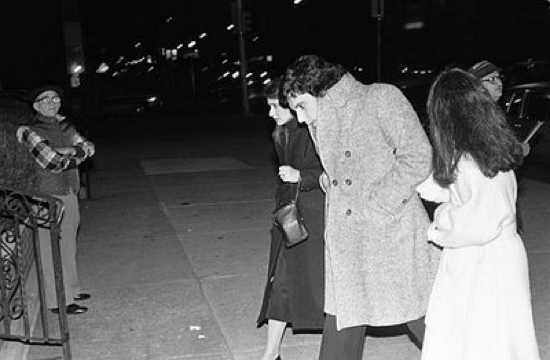
Salvatore Testa was a Philadelphia mobster who served as a hitman for the Scarfo crime family from 1981 until his death in 1984. His father, a highly successful criminal, was assassinated by a nail bomb in 1981 leaving Testa with control of his legitimate and illegitimate businesses. This made Testa immensely rich when he was only 25-years-old.
Testa was an extremely aggressive individual and he killed 15 people personally during the years he was active. One of his many victims was the man who engineered the assassination of his father; mobster and bodyguard Rocco Marinucci. Marinucci’s body was found exactly one year after the assassination of Testa’s father. The corpse was covered in bullet wounds and had three large unexploded cherry bombs stuffed in the mouth. Testa was quoted by surviving gangsters as saying: “I wish that cocksucker was still alive so I could kill him again.”
Testa also survived numerous assassination attempts. The first time, Testa was sitting outside a restaurant in an Italian market, when a Ford Sedan slowed down and a sawn-off shotgun poked out of the window. Testa was caught full in the side with a load of buck shot that penetrated his stomach and nearly severed his left arm. He eventually recovered and the perpetrators were forced to go into hiding after he learned who they were. Testa met his demise after being lured into an ambush by his former mobster friends. He was shot in the back of his head at close range. The motive for his murder was the increasing paranoia of the boss of the Scarfo crime family, who believed Testa was plotting against him.

Sammy the Bull was an associate and eventual underboss of the Gambino crime family. He is perhaps most famous for becoming an informant against former boss John Gotti. His testimony helped put Gotti in prison for the rest of his life. Gravano has also committed numerous murders and contract killings during his criminal career. He was nicknamed “The Bull” because of his size and stature, and his habit of starting fist fights with fellow mobsters.
He began his mafia activity in the late 1960s as an associate of the Colombo crime family. He participated in armed robberies and other petty crimes, though he quickly evolved into the lucrative field of loan sharking. Gravano committed his first murder in 1970. Fellow associate Joe Colluci had been having an affair with Gravano’s friend, Tommy Spero’s wife and had been plotting to kill Spero. Gravano shot Colluci in the head at close range in a mobster-owned bar. The murder earned Gravano respect among powerful underworld figures.
By the early 1970s Gravano was an associate of the Gambino family. He was arrested on suspicion of murder however he was soon released. It was at this time he began a long running robbery spree lasting a year and a half which resulted in him becoming a made man in the Gambino family. He accepted his first contract killing in 1980. A man named John Simone had been part of a conspiracy to murder Philadelphia crime boss Angelo Bruno, without the consent of the mafia commission and in return was sentenced to death. Gravano abducted Simone with the help of two friends and drove him to a wooded area where he was shot in the head and his body disposed of.
Gravano committed his third murder in the early 1980s after a wealthy business magnate insulted him. He was ambushed in the street by Gravano’s friends and shot in the head, then once in each eyeball. Gravano proceeded to spit on the man as he died on the floor. Gravano later became underboss of the Gambino crime family under John Gotti, and was Gotti’s favorite hitman in this period. After being charged with various crimes, he offered evidence against Gotti in return for reduced jail time. He had confessed to 19 murders yet he only received a five year sentence. After his release he went into hiding from the mafia, though he became involved with organized crime in Arizona, and is now in jail.
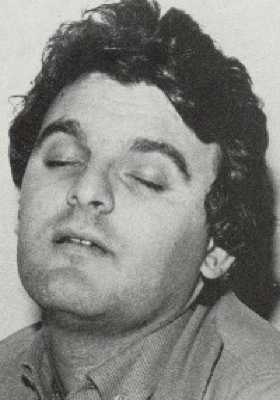
Greco was an Italian mobster who worked as a contract killer in Palermo, Italy during the 1970s. Unlike other hitmen, Greco operated whilst on the run from the law and was a fugitive for most of his criminal career. He rarely worked alone, instead employing “death squads” of gangsters wielding AK-47s who would routinely ambush victims and spray them with bullets. He was convicted whilst on the run of 58 murders, though the overall total is thought to be over 80. On one notable occasion, he tortured and killed a teenager whose father he had also killed. It is rumored that he dissolved the body in acid.
By 1979 Greco was a high-ranking and respected member of the Mafia Commission. He committed most of his murders between the years 1980-83, during the Second Mafia War. His victim’s bodies were commonly taken to “the room of death” – a shack ran by Mafia figures for torturing, killing and dissolving victims’ bodies in acid. In 1982, Palermo boss Rosaria Riccobono was invited to a barbecue at Greco’s estate. After Riccobono and his most powerful associates arrived, they were murdered by Greco and his “death squad.” The hit had been ordered by boss Salvatore Riina, who was intimidated by Riccobono’s power and wealth. No bodies were ever found and they were reportedly fed to starving pigs.
Greco was murdered in his home in 1985, by two former members of his “death squad.” Ironically it was Salvatore Riina who had ordered the hit, who believed Greco was becoming too ambitious and too independently minded to be kept alive. When he died he was 33-years-old.
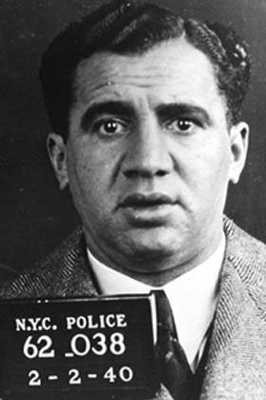
Abe Reles was by far the most notorious hitman involved with Murder Inc; a secret group of contract killers who worked for the Mafia from 1920-50. He was mostly active as a mobster during the 1930s, when he killed for various New York crime families. His weapon of choice was an ice pick, which he would expertly use to impale a victim’s head and puncture the brain. Reles was prone to blind rage, and often killed on impulse. On one notable occasion he murdered a parking lot attendant for failing to bring his car fast enough. Another time, he invited a friend for supper at his mother’s house. After the meal was over, he skewered the man with his ice pick and disposed of the body with the help of a friend.
As a teenager Reles became involved in boot-legging during the prohibition era, and soon became well-known in the world of organized crime. He then graduated on to loan sharking and his success implemented him on the hit list of mobster and former friend, Meyer Shapiro. Reles and some of his gangster friends were later ambushed by Shapiro’s men, though no one was killed in the attempted hit. Meyer Shapiro proceeded to kidnap Reles’ girlfriend and rape her in a cornfield. Reles then set out on a mission of revenge; to kill Meyer Shapiro and his two brothers and also take over his illegitimate operations. After several unsuccessful hits, Reles forced entry into Irving Shapiro’s home and dragged him out on the street to humiliate him, before shooting him dead. Two months later, Reles found Meyer Shapiro and shot him in the face at point blank range. Three years passed, before Reles finally located the third and last Shapiro brother. William Shapiro was abducted by Reles and his men, before being severely beaten and later buried alive.
By 1940, Reles faced charges on a number of killings and would most likely be executed if convicted. To save himself he ratted on former friends and members of Murder Inc, all six of whom were executed. He was soon scheduled to testify against powerful mob boss Albert Anastasia, and was under constant guard in a hotel room on the night before the trial. The following morning he was found dead on the pavement outside. It is not known whether he was thrown or pushed out the window, or if he was trying to escape.
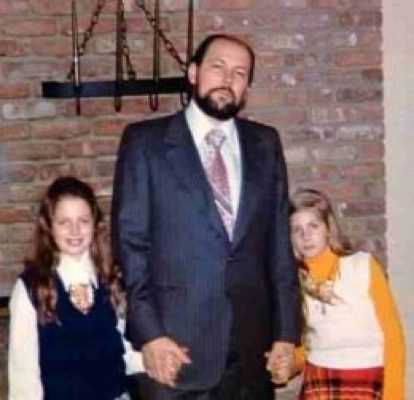
Perhaps the most infamous contract killer in history, “Ice Man” Kuklinski is thought to have murdered over 200 men (never women, or children) personally during in his lifetime. He operated in New York and New Jersey from 1950-88 and worked as a hitman for the DeCavalcante crime family, as well as various other prominent crime families. Kuklinski committed his first murder at the age of 14, beating a bully to death with a thick piece of wood. In order to avoid the identification of the body, Kuklinski cut off the boy’s fingertips and removed his teeth before dumping the remains off a South Jersey bridge.
In his teenage years and early twenties, Kuklinski became a notorious serial killer in Manhattan, brutally murdering homeless people for the sheer thrill. Most of his victims were shot or stabbed, and then left to drop were they died. He also began pool hustling for income, whilst beating anyone who opposed him to within an inch of their lives. His reputation for brutality soon caught the attention of various mafia crime families, who sought to utilize his talent for violence by making him an enforcer in their ranks. He became an associate of the Gambino crime family, staging robberies and also pirating pornographic video tapes. One day, a respected made member of the Gambino family named Roy DeMeo took Kuklinski out in his car and they parked on a city street. DeMeo then selected a random target, a man walking his dog. He then ordered Kuklinski to kill him. Kuklinski swiftly got out, walked towards the man and shot him in the back of the head as he passed by. This was the beginning of Kuklinski’s career as a hitman.
Over the next 30 years Kuklinski worked successfully as a contract killer. His nickname of “Iceman” came from his method of freezing his victims to disguise the time of death from authorities. Kuklinski was also famous for his varying methods of execution, the most unusual being the use of a crossbow aimed at a victim’s forehead, though he more commonly utilized cyanide as a poison. When the authorities finally identified Kuklinski as a notorious hitman, they found that no evidence existed to get a murder conviction. As a result they had to rely on a sting operation; an undercover agent pretended to hire Kuklinski for a hit, and recorded Kuklinski talking in-depth about how he would carry it out.
Afterwards, he was soon arrested and charged whilst trying to obtain cyanide for a planned hit. He received five consecutive life sentences for murder after confessing to numerous hits, making him ineligible for parole until his 110th birthday. He died in prison of natural causes when he was 70-years-old.








